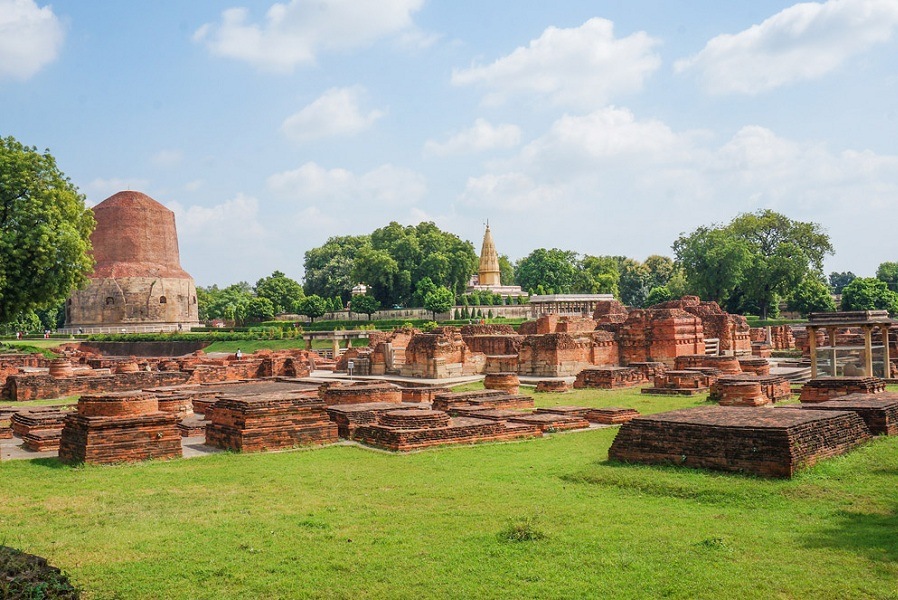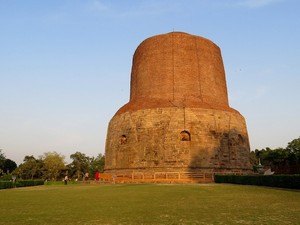Archaeological Remains / Monastery Ruins, Sarnath - Timings, History, Architecture, Best Time to Visit
 #4 of 12 Places to Visit in Sarnath
#4 of 12 Places to Visit in Sarnath
 Distance (From Sarnath Railway Station): 1.5 Kms
Distance (From Sarnath Railway Station): 1.5 Kms
 Trip Duration (Including Travel): 30 Mins - 1 Hr
Trip Duration (Including Travel): 30 Mins - 1 Hr
 Transportation Options: Cab / Walk/Trek
Transportation Options: Cab / Walk/Trek
 Travel Tips: e entry ticket provides combined entry to the Archaeological Ruins complex, Dhamek Stupa, and Archeological Museum.
Travel Tips: e entry ticket provides combined entry to the Archaeological Ruins complex, Dhamek Stupa, and Archeological Museum.
At a distance of 1.5 km from Sarnath Railway Station, and 9 km from Varanasi Junction, Archaeological Buddhist Remains or Monastery Ruins is an excavated site in Sarnath. Just Beside Archaeological Museum, it is one of the popular archaeological sites in India, and among the must-visit Sarnath Tourist Places.
The Archaeological Remains of Sarnath started attracting the scholars since the 19th Century. As a result excavation works of Sarnath started first of all by Sir Alexander Cunningham (1835-36), Major Kittoe (1851-52), Mr. C. Horne (1865), Mr. F.O. Oertal (1904-05), Sir Johan Marshal (1907), Mr. H. Hargreaves (1914-15), Mr. Daya Ram Shani (1927-32). Then after a gap of about 82 years once again excavation work is conducted by Sarnath Circle, Sarnath of Archaeological Survey of India.
The colossal ruins lie in the same compound as Dhamek Stupa. The excavation sites of Sarnath have impressive collections of monasteries, stupas, temples, inscriptions, sculptures, and other antiquities ranging in date from 3rd century BC to 12th century AD. These sites are now maintained by the Archaeological Survey of India. There are said to have been 28 stupas that were built by Ashoka, the 3rd century BC Mauryan king. Situated immediately north of the entrance are the ruins of Dharmarajika Stupa, a very small stupa originally, but later on, other parts being added to its structure and it became a huge, grand structure of bricks. This stupa was completely destroyed by the Diwan of Raja Chet Singh of Banaras to build temples from the material of this historical site edifice. Today, it is only a flat circular structure of bricks.
Near Dharmrajika Stupa, there is a small enclosure containing the famous monolithic railing that dates back to the Sunga period. This monolithic railing made of Chunar sandstone was discovered during an excavation in 1904-05. Each side of this square railing measures 2.54m in length and 1.45m in height. It was probably originally placed at the top of the nearby Dharmarajika Stupa. It bears two inscriptions dating from about the 3rd century BC which refer to the teachers of the Sarvastivadin sect.
Few meters ahead of Monolithic Railing is the ruins of the Ashoka Pillar built in 250 BC by Mauryan emperor Ashoka. This pillar originally had a lion capital on its top where four lions seated back to back and is now the national symbol of our country. The pillar is in a broken state, but the four lion symbol is still safe in the Sarnath Museum. The wheel from the base of this lion capital is now placed onto the center of the National Flag of our country 'Tiranga'. The four lions from the lion capital of Ashoka Pillar are the symbol of Power, Courage, Confidence, and Pride.
Another prominent ruin in the monastic complex is the Moolgandha Kuti, situated just ahead of Asoka Pillar. This is the remnant of a huge temple probably represent the spots where Lord Buddha used to meditate. The roof has been collapsed and only the remains of thick walls supporting a lofty super-structure are there. In the area around the Moolgandha Kuti, there are many ruins of small stupas, Buddha Viharas, and a small temple. These small stupas are known as votive stupas which are basically built to commemorate visits of various acknowledged Buddhist masters or dignitaries.
Timings: 9 AM - 5 PM
Entry: Rs. 25 for Indians & Rs. 100 for Foreigners



















